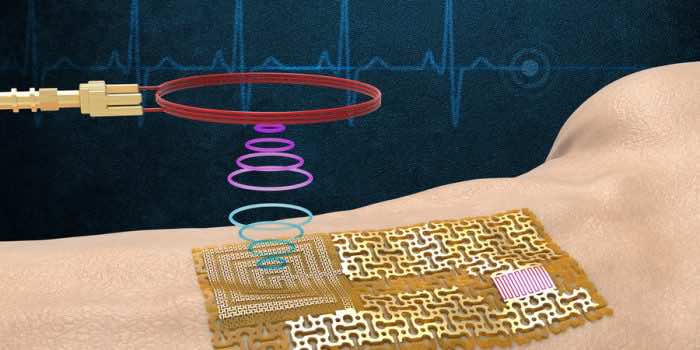Engineers from the Massachusetts Institute of Technology (MIT) have successfully built wireless wearable, skin-like sensors for health monitoring, according to Interesting Engineering.
The e-skin is a revolutionary breakthrough that does not require batteries or an internal Processor. A semiconducting coating on the e-skin adapts to the skin like electrical Scotch tape.
“If there is any change in pulse, or chemicals in sweat, or even ultraviolet exposure to skin, all of this activity can change the pattern of surface acoustic waves on the gallium nitride film,” researchers stated in a press release.
The engineers also mentioned that the film’s sensitivity is high even to detect minor changes. For example, it can see a person’s blood pressure, glucose levels, heart rate, and activity levels using wireless technology. This data will be transmitted from the sensor to the smartphone for further examination.

Let’s take a closer look at how the e-skin works. The sensor’s core is made of an ultrathin, high-quality gallium nitride sheet. The substance is well-known for its piezoelectric properties, which enable it to emit an electrical signal in reaction to mechanical strain and to vibrate mechanically in response to an electrical impulse.

They developed pure, single-crystalline samples of the material and coupled them with a gold conducting layer to improve the quality of incoming and outgoing electrical impulses. As a result, gallium nitride vibrates in response to a person’s heartbeat and the salt in their sweat, according to the researchers.
These vibrations generate an electrical signal that a nearby receiver can easily decode. As a result, even without a battery or a chip, the gadget may relay sensor data.
In addition, the researchers coated the e-skin with a thin layer of pure gallium nitride and strapped it on participants’ wrists and necks. Finally, they used a small antenna that was kept nearby to record the sensor’s frequency without touching it.

As a result, the device could recognize and communicate changes in the substance’s surface acoustic waves associated with the participant’s heart rates. This marks the beginning of the development of a cost-effective wireless sensor. This can also be used with other membranes to track additional indicators.
E-skin appears to have the potential to revolutionize the healthcare industry by offering a more creative way to monitor health, especially for people with medical conditions.
The research was first published in the journal Science.


